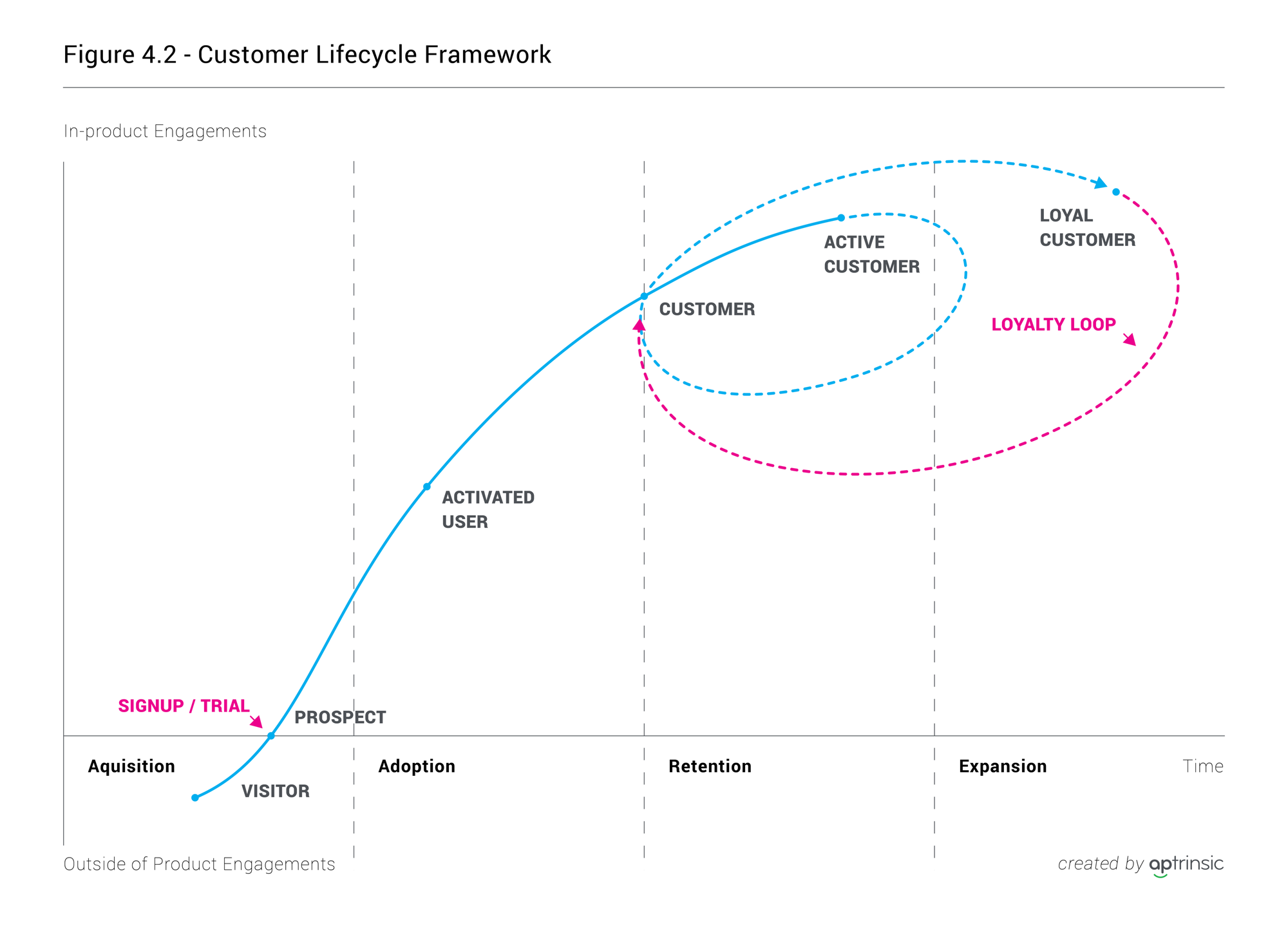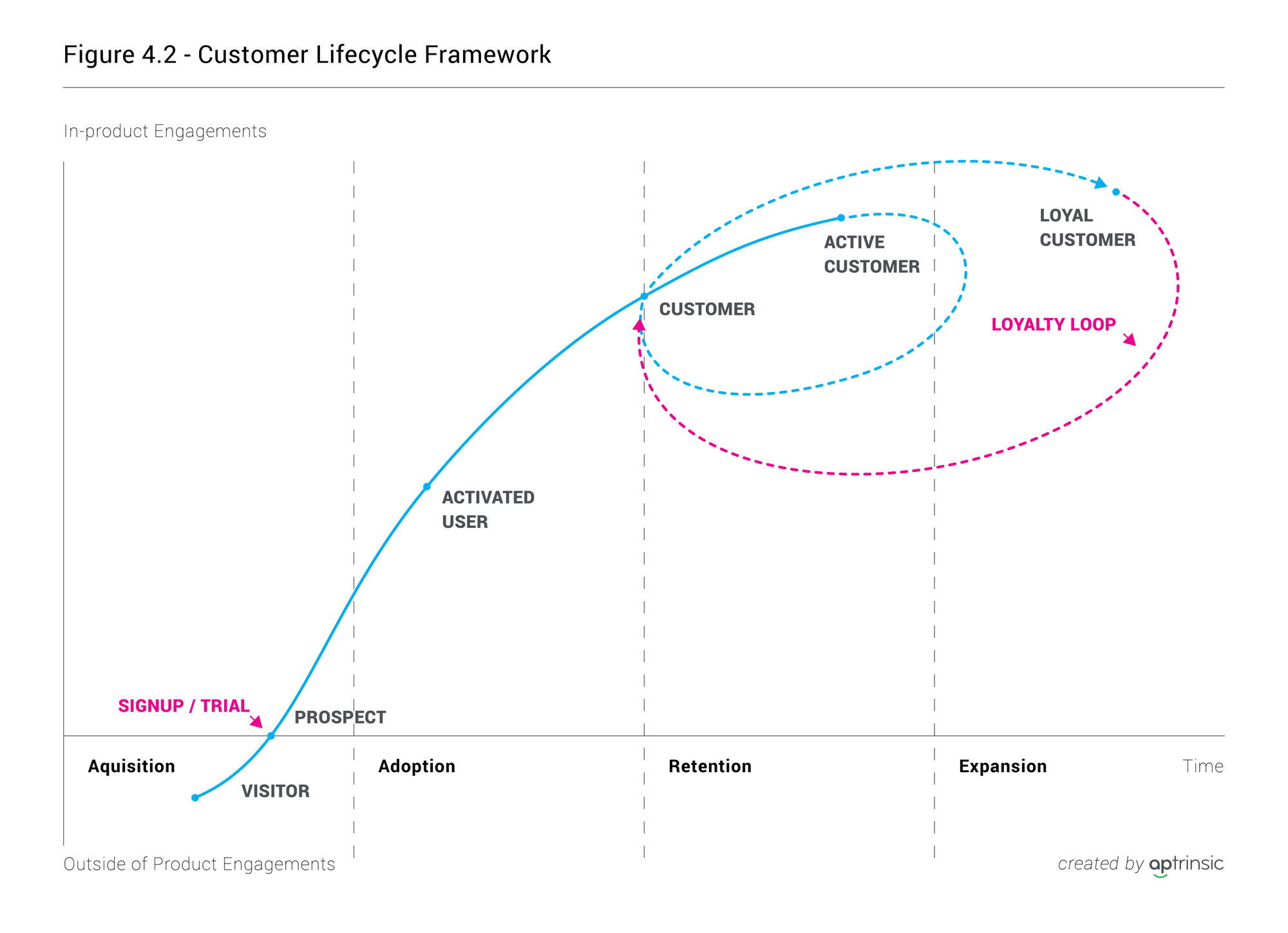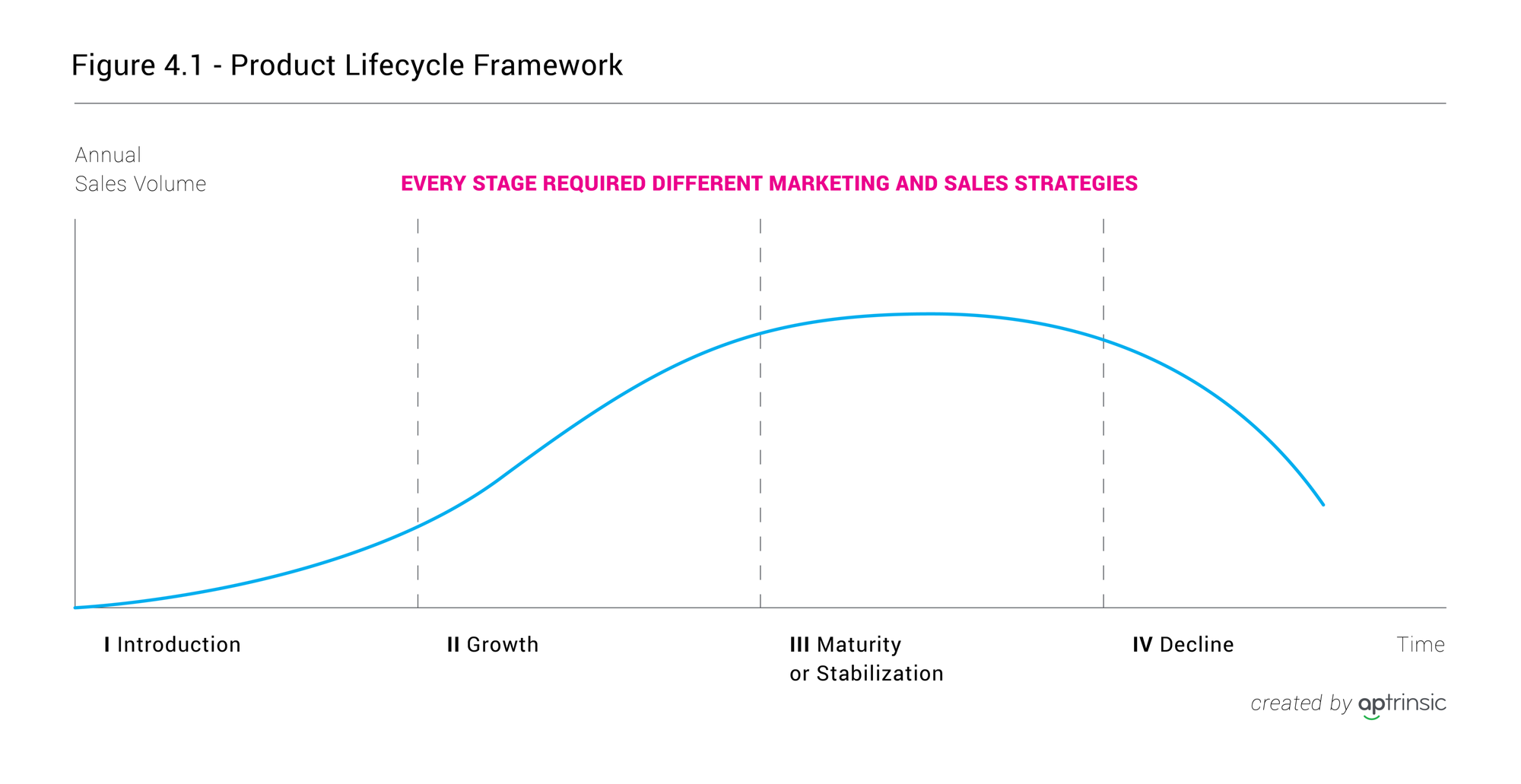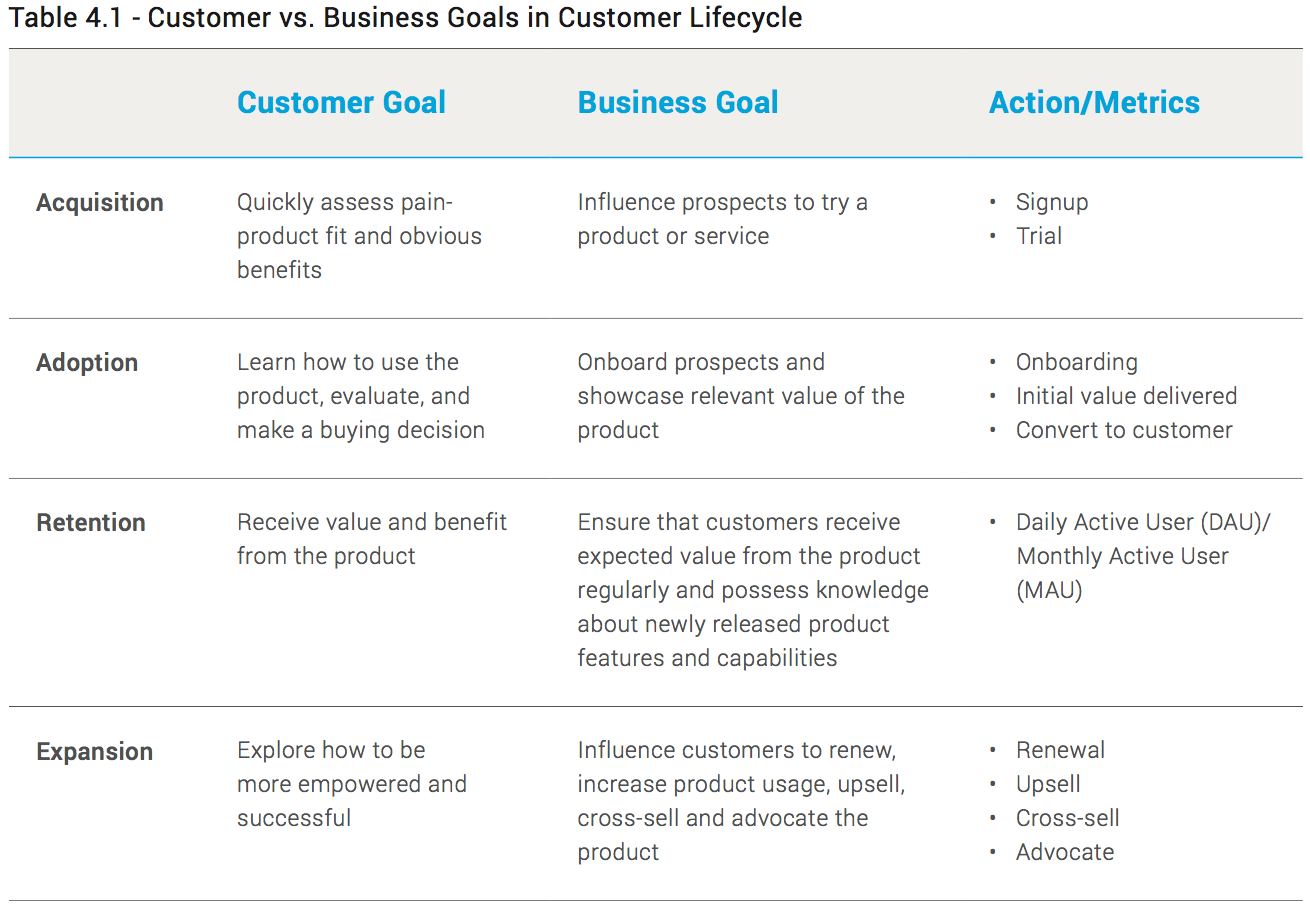Chapter 4: Taking an Outside-In Perspective of the Customer Lifecycle


In the beginning of the software revolution, and the early days of SaaS, the software development models resembled processes of the past century. These processes were based on concrete and easily understood requirements and assembly lines, as in the automobile industry. Agile methodologies in the early 2000s changed how companies design and deliver software products in two important ways.
First, agile methodologies emphasized shorter development cycles to minimize risk and ensure a shorter feedback loop from customers. Efficient cycles enabled companies to build software products more cost-effectively, while also letting customers experience and provide feedback about the product. This is in stark contrast to designing software that took months, or even years, to reach customers.
Second, agile shifted the focus from the product lifecycle to the customer lifecycle as the primary GTM strategy. This is a better way to understand customers’ needs and communicate value through marketing and sales activities.
In much the same way, SaaS companies that are serious about customer experience will have to rethink how they look at the company-customer relationship. It’s easier for companies to design sales processes, rather than put themselves in their customers’ shoes. It may sound banal, but analyzing the buying process can profoundly affect an organization.
Think of this in the context of a shoe store. A store manager might create a policy to greet every customer who walks in, and tell them about a new golf shoe collection. But how effective would this policy be with a returning customer who bought four or five Asics Tigers in the last few years? While a simple consumer example, this helps illustrate how the way that customers buy can be quite different, and disconnected from how companies sell.
The SaaS revolution and the introduction of agile methodologies removed the need for companies to use product lifecycle as the way to market their product; but sales-driven thinking about customer journeys manifested in the new strategy of creating marketing and sales funnels. You probably can find a thousand different variations of a SaaS sales funnel, but most focus on the company’s sales process, not the customer’s buying journey.
In the past decade at least, there has been much talk about companies becoming customer-first and customer-centric; yet many enterprise software companies that call themselves customer-centric are failing at the first step of providing better customer experience. They fail to understand how customers buy, because they still focus on how they ought to be sold.
4.1 What is a Product Lifecycle?
Product lifecycle is a framework that helps a company organize its marketing and sales of a product, from introducing it to the market to when sales peak and decline.

Figure 4.1 shows a classic product lifecycle diagram where each stage corresponds to specific sales and marketing strategies, programs, and campaigns.
It was helpful to see selling and marketing through the prism of the product lifecycle in the on-premise software era. At that time, it was more complicated and costly for companies to release updates, because often, new releases were treated as a new version of the product requiring a new physical installation of software. Just picture an early version of Windows that had to be updated using a CD, or even a floppy drive.
With SaaS, the product lifecycle concept became obsolete. Today, companies make incremental improvements and release product updates in the cloud on a weekly, daily, and sometimes even hourly basis. For example, Amazon releases new software every 11.6 seconds! This became possible thanks to a new set of technologies called “continuous deployment”.
Quick deployments of new software updates and features increase the speed at which companies receive customer feedback. A customer lifecycle framework puts customers at the center of virtually everything a company focuses on, to successfully operate and sustain revenue growth. The customer experience becomes an essential part of driving an effective customer engagement and GTM strategy that helps move prospective customers from one lifecycle stage to the next.
What Is the Customer Lifecycle?
Customer lifecycle is a framework that describes the process a customer goes through when considering, buying, using, and advocating use of a product or service.
Companies that understand how their customers progress through the lifecycle can not only better evaluate customer experiences at different points, they can also uncover critical steps where customers get stuck. For instance, perhaps prospective customers tend to abandon a trial upon hitting a certain step in a task they are trying to complete. By noticing this pattern, the company could investigate to determine the problem with the step, and then take measures to remedy the situation.
Furthermore, unlike a product lifecycle or marketing/sales funnel, a customer lifecycle is a continuous process of retaining, expanding, and creating loyal customers (as shown in Figure 4.2). Unfortunately, the shoe store analogy only takes us so far. But it would be nice if you could buy a pair of shoes and then upgrade their color while you were wearing them (perhaps, one day, a startup will solve even this). For all companies, it is much more profitable to keep a customer than to acquire a new one. The beauty for SaaS companies is that the SaaS business model, combined with a new approach to customer acquisition, makes it easier to retain customers.

The customer lifecycle in Figure 4.2 is notably different from many other variations you can find. We included a y-axis to show whether a prospective customer has access to, and interacts with, the product at a particular stage. In other words, it shows in-product engagement. Ideally, you will see in-product engagement increase as prospects progress to the higher lifecycle stage. Signing up for a freemium or free trial signals that a site visitor has become a prospect. From this point, in-product engagement is a primary force behind the buyer moving along the lifecycle path.
The x-axis shows the time it takes for a prospect to progress. For example, the shorter the path from signup to becoming a customer, the more effective the organization is in acquiring customers — hence, the shorter the buying cycle.
In contrast, the simplified version of the customer acquisition process presented in Figures 3.1, 3.2, and 3.3 (customer lifecycle) underscores the importance of keeping customers and ensuring that they still derive value from your product over time. A paying customer does not always mean an active customer. Decline in product usage and engagement can be an early sign of a customer who will eventually churn.
In addition to taking into consideration metrics like customer satisfaction and Net Promoter Score (NPS), this customer lifecycle views customers as loyal after they renew their subscription for the first time.
4.2 The Four Stages of the SaaS Customer Lifecycle
Now, let’s break down the four critical stages of a SaaS customer lifecycle: acquisition, adoption, retention, and expansion (modified based the following Customer Lifecycle framework):
Acquisition stage
The business goal is to influence prospects to try a product or service.
Customer goal: Quickly assess pain-product fit and obvious benefits
Question: Does this product address my immediate needs?
Customer action: Signup/Trial
Customer experience focus:
- What customer segments should we engage, and what’s the value of features we should be promoting?
- How can we reduce friction for buyers and influence them to try our solution?
Adoption stage
The business goal is to onboard prospects and showcase relevant value of the product.
Customer goal: Learn how to use the product, evaluate it, and make a buying decision
Question: Is this product easy to use? Does it address my needs? Do I want to buy it?
Customer action: Onboarding/Initial value delivered/Convert to customer
Customer experience focus:
- How can we make customer experience a core value that our solution delivers?
- How can we accelerate and increase the trial-to-customer conversion rate
- How can we nurture and re-engage customers with the product based on unique customer behaviors?
Retention stage
The business goal is to ensure that customers receive expected value from the product regularly, and possess knowledge about newly released product features and capabilities.
Customer goal: Receive value and benefit from the product
Question: Do I still value and want to actively use this product? Is this product essential to achieving my personal and/or professional goals?
Customer action: Daily Active User (DAU)/Monthly Active User (MAU)
Customer experience focus:
- How can we ensure customers continuously receive value from using the product?
- How does customer behavior in the product help to prevent churn and predict CLV?
Expansion stage
The business goal is to influence customers to renew, increase product usage, purchase an upsell or cross-sell, and advocate use of the product.
Customer goal: Explore how to be more empowered and successful
Question: Will I become more effective with increased product usage or new features?
Customer action: Renewal/Upsell/Cross-sell/Advocate
Customer experience focus:
- How can we deliver features and experiences that are more valuable to customers, and influence them to buy more or upgrade their subscription
- How can we enable our customers to become public advocates?

Table 4.1 summarizes customer and business goals for each stage of the lifecycle. When companies use a customer lifecycle framework, they can reevaluate their own processes to ensure that organizational goals are aligned with customer needs and expectations. From the customer lifecycle, we can infer the following:
- Every stage in the customer lifecycle corresponds to a specific need that must be addressed before a customer moves to the next stage, resulting in deeper engagement with a product and the company.
- Three out of four stages (adoption, retention, and expansion) occur while the customer uses the product. As a result, in-product behaviors and engagement and behavioral data should influence most of the customer journey throughout the lifecycle.
- The new customer acquisition process is closing the gap between the time the prospect and company engage in conversation, and the time the prospect tries the product.
- Retention and expansion stages in a customer lifecycle are a continuous process of delivering value to the customer. See the highlighted “loyalty loop” in the customer lifecycle diagram (Figure 4.2).
- The earlier product lifecycle approach encouraged companies to focus on marketing and sales strategies based on where the product was in the cycle. Customer lifecycle puts customers at the center, and helps companies focus on how to market and sell software products in response to customer needs and preferences.
Why is understanding the customer lifecycle important to transitioning to a more personalized customer experience? A customer lifecycle framework forces companies to understand the buying process from the customer perspective. It enables companies to use in-product behaviors to deliver relevant experiences to each user, which helps acquire, retain, and grow the customer base.
When SaaS companies understand in-product customer journeys and where a customer is in the lifecycle, teams can segment customers into meaningful groups to address individual needs and goals. This strategy of understanding the behaviors that drive customers to the next lifecycle stage is more effective in increasing product adoption and engagement.

